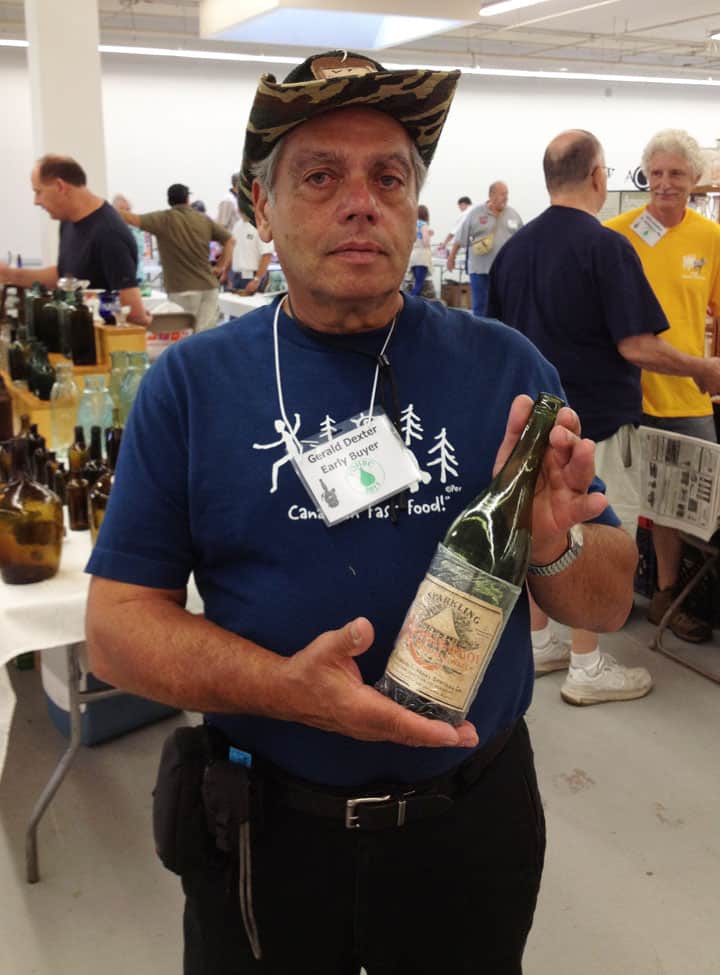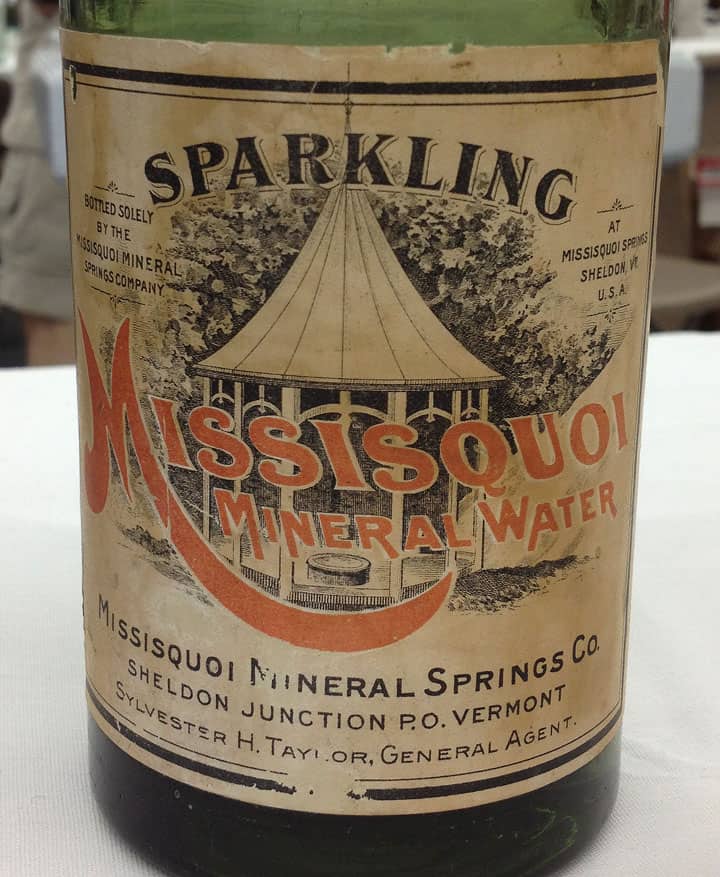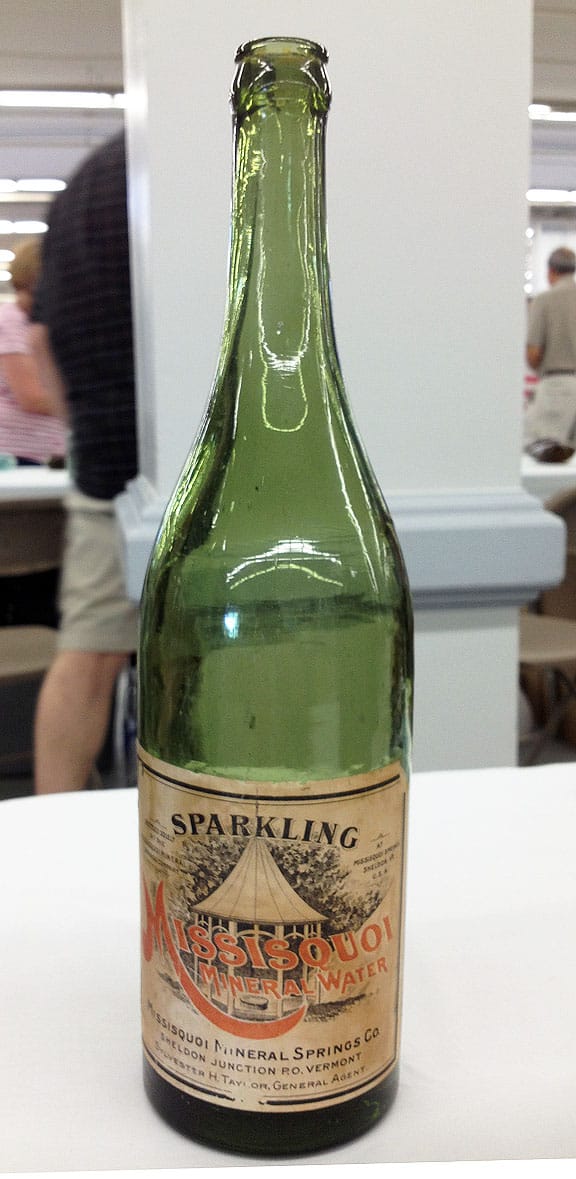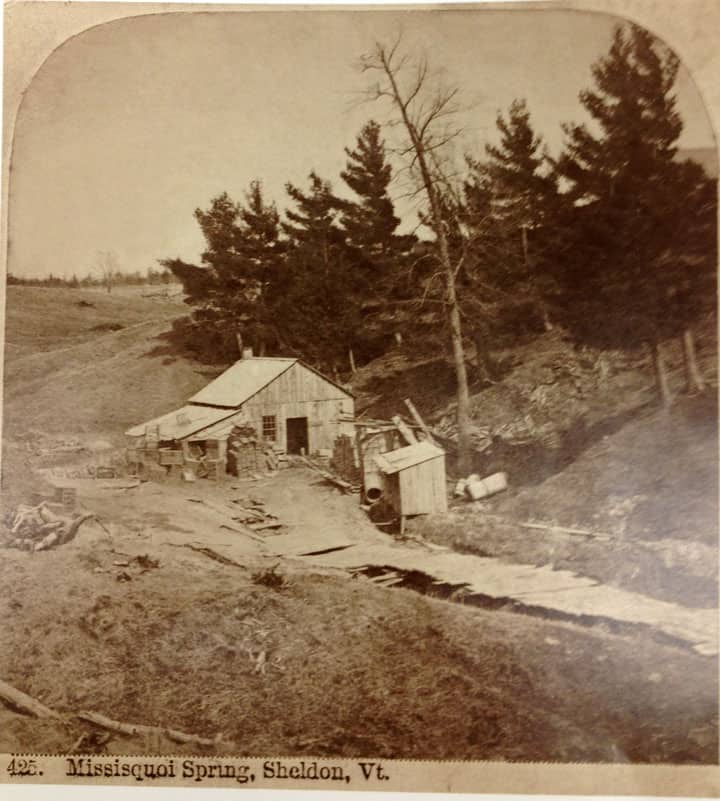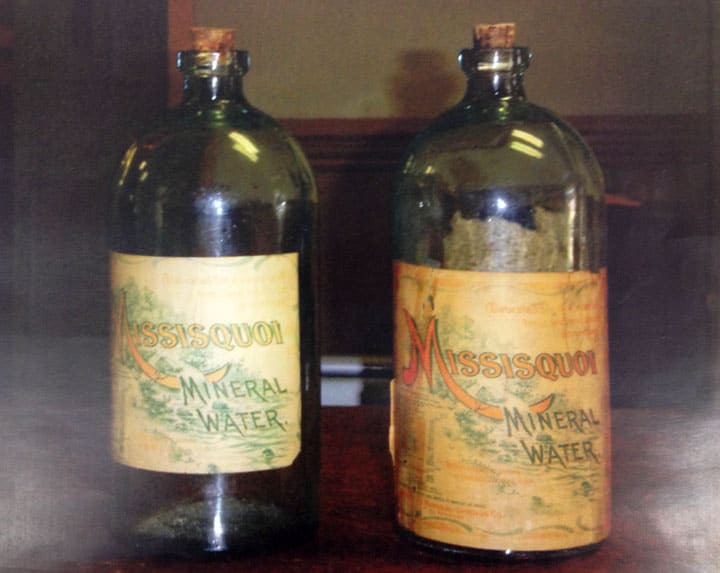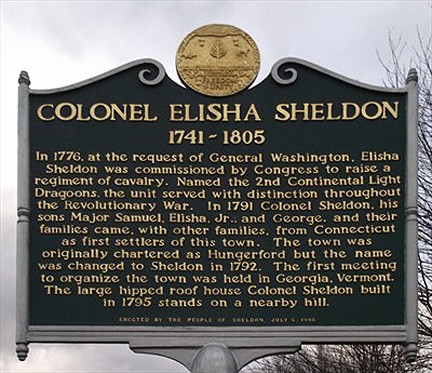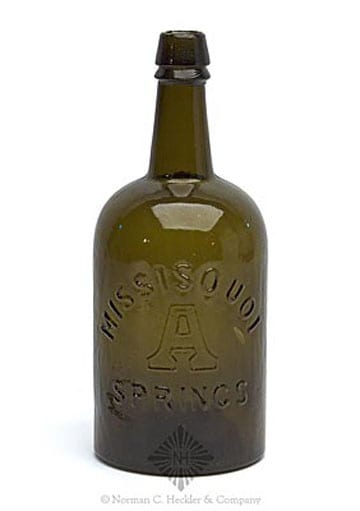![]() When I get back after a big bottle show like the 2013 Manchester National, I have to sift through my mind and Iphone pictures as so many folks stop by my table with bottles they are excited about. Many want to share the bottle (possibly put up on Peachridge) or get more information. In this case I am honestly not so sure. I have posted some of my pictures from Gerald Dexter below which prompted an online search for Missisquoi Springs from Sheldon, Vermont. I want to be a little more educated as I have seen some of these embossed bottles in auctions.
When I get back after a big bottle show like the 2013 Manchester National, I have to sift through my mind and Iphone pictures as so many folks stop by my table with bottles they are excited about. Many want to share the bottle (possibly put up on Peachridge) or get more information. In this case I am honestly not so sure. I have posted some of my pictures from Gerald Dexter below which prompted an online search for Missisquoi Springs from Sheldon, Vermont. I want to be a little more educated as I have seen some of these embossed bottles in auctions.
There is also a bit of a coincidence here as I wrote earlier in the day on the Constitution Bitters that is in the form of a Gazebo. If you look at the label on Gerald’s bottle there is a Gazebo. Little things that fire you up.
People ask me about Peachridge all the time and thank me for the work. I tell them, even if there was no audience, I would still do this for myself. I know so little but learn a little more each day in a hobby I so dearly love.
? What I found ?
First I wanted to find out what Missisquoi means and about Sheldon, Vermont. Wow, now we have Colonel Elisha Sheldon.
Sheldon, Vermont
“This is a good township of land, productive of wool, grain and other northern commodities. The River Missisco passes through the town, and Black Creek, a branch of that river, gives Sheldon ample water power. The village is a thriving place, both in its manufactures and trade . . . The settlement of Sheldon was commenced about the year 1790 by Colonel Elisha Sheldon, and Samuel B. Sheldon, emigrants from Salisbury, Connecticut. The settlement advanced with considerable rapidity, and the town was soon organized.”
Gazetteer of Vermont, Hayward, 1840.
Missisquoi
The Missisquoi derives its name from the Indian words Missi meaning much, and Kiscoo waterfowl, from the great number of cranes, herons and ducks, that frequented, and still frequent, this stream and its branches every season.
Mineral Springs
In Sheldon, the following are the principal mineral springs: “The Missisquoi,” 8 or 10 different springs within an area of half an acre; proprietor, C. Bainbridge SMITH, Esq., New York City. “The Sheldon;” proprietors, Sheldon Spring Co., S. S. F. CARLISLE, agent. “The Central;” proprietors, Green & Co. “The Vermont;” proprietors, SAXE & Co.
The analysis of the Missisquoi A spring, ( he only one much used) is given, so far as published already.
The ingredients are combined in the water forming: Sulphate of Potash, Carbonate of Magnesia, Chloride of Sodium, Carbonate of Lime, Sulphate of Soda, Carbonate of Ammonia, Silicate of Soda, Protoxide of Iron, Crenate of Soda, Silicic Acid, Carbonate of Soda, Crenic Acid, &c.
Of the “Central” analyzed by F. F. MAYER, a prominent chemist of New York City, the following is the statement of the properties contained as a bi-carbonate: sulphate of lime, carbonate of lime, carbonate of magnesia, carbonate of iron, carbonate of soda, carbonate of potassa; chloride of calcium, sillicic acid, allumnis and phosphoric acid, organic matter, carbonic acid, fluorine, manganese, baryta.
Of the “Vermont,” analyzed by Henry KRAFT, a distinguished chemist of New York, the properties so far as discovered, are: Chloride of sodium, chloride of calcium, carbonate of soda, carbonate of magnesia, carbonate of iron, carbonate of manganese, phosphoric acid, silicate of alumina, sulphate of lime, carbonic acid, organic matter. In the sediment of the spring are found: Silica, alumina, calcium, magnesia, manganese, peroxide of iron, protoxide of iron, chlorine, fluoric acid, sulphuric acid, hydrochloric acid. The phosphoric acid, present in the “Vermont” and also in the “Central” is claimed to be an element of special medicinal value.
Of these different springs, only the “Vermont” is new. This was discovered in 1867. The others have been known and used, more or less, for 50 years.
They are located, with the exception of the “Central” quite near the banks of the “Missisquoi river, and are included within a distance of about 3 miles. They lie mainly to the north of the village; the farthest being about 2 1/2 miles distant from it. The “Central” is in the village. In connection with the “Sheldon” there is an elegantly furnished bathing-house.
There are a number of other Mineral springs in different parts of the town, and in fact there is quite a strong impregnation of iron in very many of the springs and wells, in common family use, but none have been used medicinally, to any extent, except the above named. The water from each of these is bottled and sent to all parts of the country.
The shipments of the “Missisquoi” particularly, have been very large-amounting, in 1868, to 14,792 boxes of 24 qt. bottles each.
Of the “Vermont” during the months of August, September, October and November, 1888, there were 1650 cases of 24 quart bottles each.
The specialty claimed for the waters of these springs is as a remedy for cancer, scrofula and other diseases of the blood, and many of the cases of benefit are very remarkable.
In consequence of the celebrity which these springs have reached within the few years past, SHELDON has acquired considerable importance as a summer resort.
From History of the Town of Sheldon by Dr. H. B. WHITNEY.
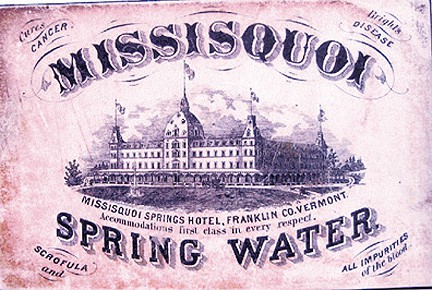
Great advertising for Missisquoi Spring Water showing the Missiquoi Springs Hotel in Franklin County, Vermont
Very quickly I was led to a comprehensive article on Vermont Mineral Water bottles by Don Fritschel. This brought me up to speed pretty quickly. Read: Mineral Waters of the Green Mountain State. There was even a Missisquoi Springs Hotel.
A little more history at A Walking History of Middlebury by Glenn M. Andres
Next I found a picture of a Missisquoi A Springs from a past Heckler auction. That’s it. This is where I have seen the big “A” on a bottle before, actually quite a few times at auctions and shows. I just never stopped and thought about it.
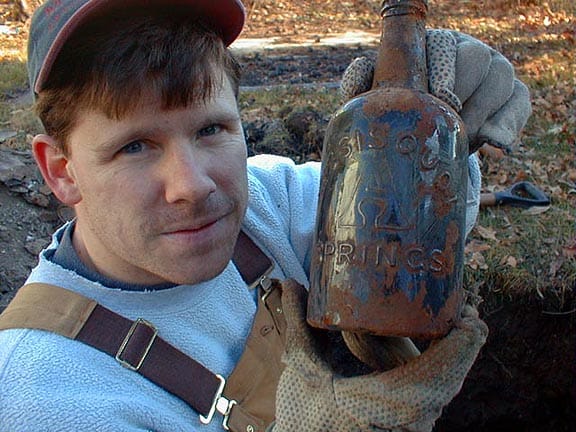
This was still in the top fill dirt, or ash I should say. An olive green quart MISSISQUOI MINERAL water. Man I was pumped! The ash was loaded with whole perfect large bottles, just stacked like pancakes. I couldn’t believe how many bottles were just crammed in on top of eachother without being damaged. – PrivyMaster.org
Next a Missisquoi A Springs that was dug pictured on PrivyMaster.org. Now I am reminded of a cool web site that I had forgotten about.
So now, the next time I see Gerald, I can at least carry on a decent conversation. I learn something new each day about our bottles.

